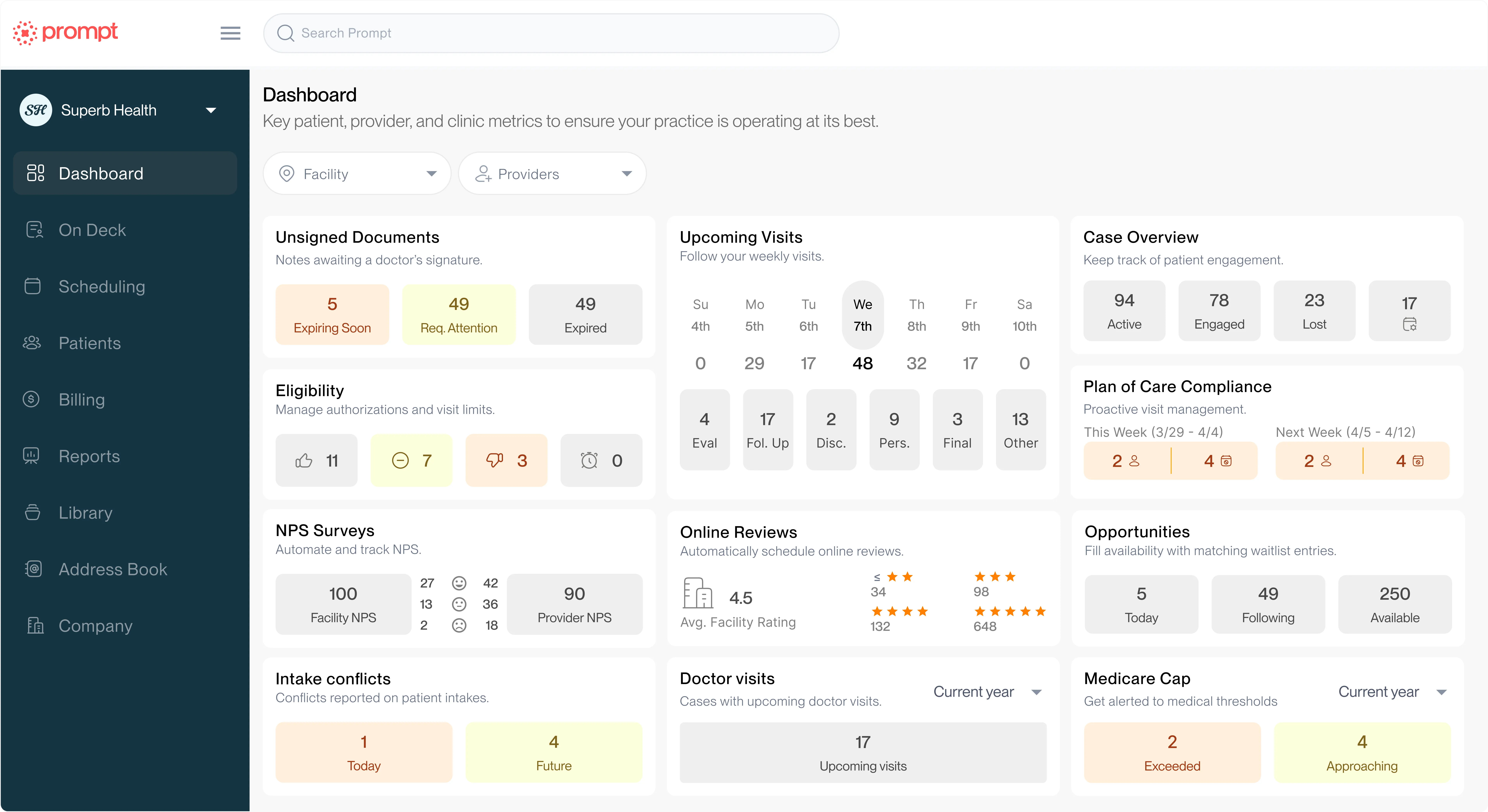See Prompt in action!


Rehab therapy is at a tipping point.
Margins are shrinking, burnout is spreading, and many clinics are juggling too many disconnected systems. It’s getting harder to keep teams aligned, motivated, and schedules full.
Yet amid the friction, a subset of clinics is breaking through.
From our survey of nearly 600 practices nationwide, 83% of respondents reported positive growth year over year. But only about half of respondents are scaling beyond 10% annually.
These high-growth clinics (those growing above 10% year-over-year) face the same pressures as everyone else. The difference is how they’ve learned to stay balanced, using data, systems, and strategy to maintain momentum while others are losing their footing.
This is just an early look at what we’re uncovering from our nationwide survey. A full report will come later this year and dig even deeper into the data and what this means for the state of our industry.
Here’s what the early findings reveal about what high-growth clinics are doing differently, and what it means for the future of rehab therapy.
AI is no longer hypothetical in rehab therapy. It’s here, and it’s being used.
Across all respondents, 7 in 10 clinics say they’re already leveraging AI in some part of their practice. But the difference between high-growth and low-growth clinics isn’t whether they use AI. It’s how?
High-growth clinics are about 10 percentage points (36% vs. 26%) more likely to use AI for both clinical and admin support like scheduling, intake, denials, and patient engagement—while lower-growth peers tend to focus AI on clinical documentation only. They’re not experimenting for experimentation’s sake; they’re using AI to lighten the manual load across the clinic and free staff to focus on care delivery and strategic growth.
Retention is the most reliable growth strategy.
64% of high-growth clinics increased provider salaries last year, compared to 56% of slower-growth peers. They’re pairing that with structured training and clear career paths, scaling through people instead of around them.
When asked how they keep teams motivated, 19% of high-growth clinics cited bonuses or performance-based incentives, compared to 15% of lower-growth clinics. By contrast, slower-growth clinics were 3.5 points more likely (27.7% vs. 31.6%) to emphasize meetings and check-ins, suggesting that time spent talking about alignment isn’t the same as building it.
When it comes to fighting burnout and improving retention, one thing is clear: money beats meetings every time.
When patients get better, practices grow stronger.
43% of high-growth practices reported significantly improved patient outcomes last year, compared to 28% of lower-growth peers.
They’re also more likely to actively manage plan-of-care compliance, combining automated reminders with direct staff outreach to keep patients engaged through discharge. That accountability translates into better outcomes, higher visit completion, and stronger revenue performance.
And among the fastest-growing clinics (those growing 21% or more YoY) 86% reported improved outcomes. It’s a clear signal that better patient outcomes don’t just follow growth, they drive it. Coupled with the higher revenue per visit, better care isn’t a coincidence. It’s a growth strategy.
In an industry flooded with data but starved for clarity, measurement has become a differentiator.
87% of high-growth clinics regularly track provider capacity and productivity. They aren’t guessing at growth… They're engineering it. For these clinics, data isn’t a report card. It’s a roadmap.
From clinician capacity to marketing ROI to patient outcomes, the most successful clinics are turning visibility into predictability. When every hour, visit, and claim is measurable, growth becomes repeatable.
When asked what’s holding them back, high-growth clinics pointed to scale, not survival.
Their top challenge: hiring and capacity constraints (39%). It’s the same uphill battle most clinics face, but for these practices, the struggle isn’t about keeping doors open—it’s about keeping up with demand. By contrast, lower-growth clinics were far more likely to cite staffing instability (56%), along with frustration over insurance reimbursement (59%) and fragmented technology systems (13%).
The story is clear: low-growth clinics are fighting for stability. High-growth clinics are after scale.
Across every data point, the same truth emerges: high-growth clinics are more connected.
Their data, teams, and workflows move together. They’re not just adopting new tools; they’re integrating them into a single, reliable system that scales.
This is where the industry is heading. And it’s exactly what we’re building next.
{{report-cta-banner}}
Help your practice grow
From intake to insights, Prompt is the all-in-one platform you need